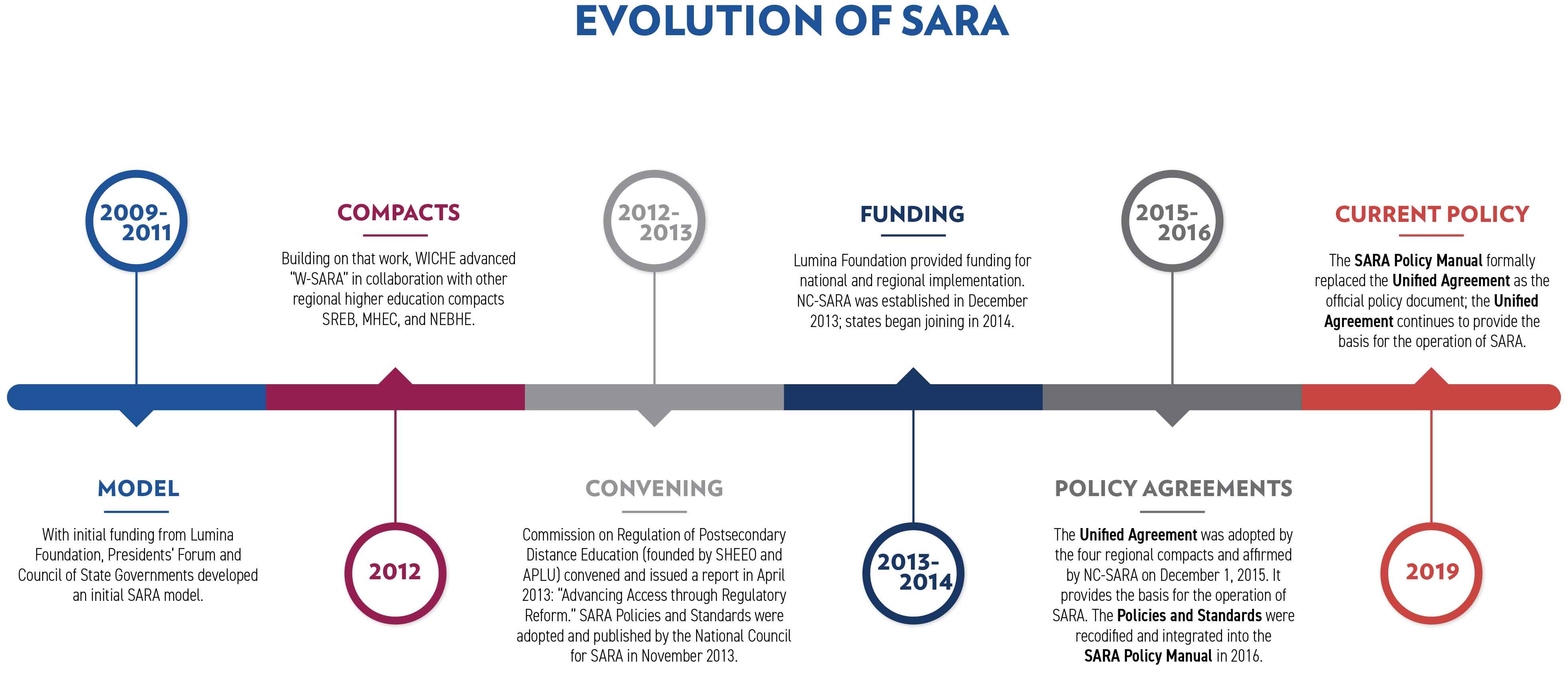Our Mission
NC-SARA’s mission is:
-
To provide broad access to postsecondary education opportunities to students across the country;
- To increase the quality and value of higher learning credentials earned via distance education; and
- To assure students are well served in a rapidly changing education landscape.
NC-SARA strives to achieve its mission in several ways. First and foremost, we work to promote and advance inter-regional alignment on core elements and requirements of State Authorization Reciprocity Agreements. This is instrumental to our efforts to expand quality postsecondary distance learning opportunities nationwide.
We also recognize the importance of collaborating with the full spectrum of stakeholders in the higher education community, including large- and small-scale distance education providers, institution accreditation agencies, elected state officials, state regulators, and state higher education executive officers. Through this collaboration, we also identify opportunities to participate in cooperative efforts of states and the larger higher education community to improve service to students and the nation through distance education.
Finally, we prioritize building public awareness of and support for SARA through regular communications to students, states, accreditors, institutional leaders and other stakeholders. It’s important to consistently communicate the value and importance of SARA directly to those who benefit from these agreements.
Take a moment to learn more about Our Work and read NC-SARA's Strategic Plan.
History and Milestones
Higher education stakeholders and nonprofit partners, including the Lumina Foundation and the Council of State Governments, developed the initial concept for state authorization reciprocity agreements between 2009 and 2011 to make it simpler for states to acknowledge other states’ work and decisions with regard to institutional authorization. Following this initial work, the four regional higher education compacts were engaged to assist in organizing the effort for states to join as members.
In December of 2013, the National Council for State Authorization Reciprocity Agreements was established to help support national implementation of the reciprocity agreements. States began joining SARA in 2014, and the SARA Policy Manual became the official policy document in 2019.
Here’s an overview of NC-SARA’s history and progress in a larger view format.
Additional Resources about the History of NC-SARA
Unified Agreement
The Unified Agreement was adopted by the four regional compacts and affirmed by NC-SARA on December 1, 2015. It provided the foundational basis for the operation of SARA.
SARA: A Monument to Sanity and Rational Policymaking. by Ed Klonoski. Published in The Evolllution. November 9, 2021.
Shepherding Change: Creating the State Authorization Reciprocity Agreement (SARA)." by Paul H. Shiffman and James W. Hall.
Available in: John Ebersole and William Patrick (Eds.) Learning at the Speed of Light. Albany, New York: Hudson Whitman/Excelsior College Press. 2017, p. 369 – 397. Used with the permission of the publisher. All rights reserved.
Advancing Access through Regulatory Reform: Findings, Principles, and Recommendations for the State Authorization Reciprocity Agreement (SARA) Commission on the Regulation of Postsecondary Education April 2013

